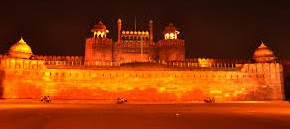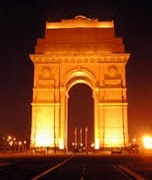History of New Delhi
Delhi has a long history, and India has been an important political center of many empires. The Delhi Sultanate is a name given for a series of five dynasties, which, along with Delhi, remained as the capital of the Indian subcontinent as their capital.
The rule of Delhi Sultanate was established in 1206 by Qutab-ud-Din. The ruins of the Delhi Sultanate include the Qutab Minar and its surrounding monuments and Tughlakabad fort.
During this time, the city became the center of culture. The Delhi Sultanate ended in 1526, when Babar defeated the army of the last Sultan Ibrahim Lodi in the first battle of Panipat and formed the Mughal Empire.
The Mughal empire ruled this region for three centuries. During the 16th century, the city declined because the Mughal capital was transferred. Fifth Mughal Emperor Shah Jahan built the walls of Shahjahanabad in Delhi and its sites, the Red Fort and the Jama Masjid within Delhi. His reign will be regarded as the zenith of the empire. After the death of his successor Aurangzeb, the Mughal Empire was plagued by a series of revolutions. They lost major parts of Maratha and Sikh empires, and Delhi was sacked and looted by Nader Shah.
In 1803, Delhi was captured by the British East India Company. During the Company rule in India, the Mughal emperor Bahadur Shah II was limited to only one figure. Indian revolt of 1857 demanded ending the company rule and declared Bahadur Shah II as emperor of India. However, the British soon removed Delhi and their other areas, and ended the short-lived revolt. It also marked the beginning of direct British rule in India. In 1911, the capital of British India was transferred from Calcutta to New Delhi, which was the last interior city of Delhi, which was designed by Edwin Lutyens.
After India's independence from the British, New Delhi became the capital of the newly formed Republic of India













0 comments:
Post a Comment